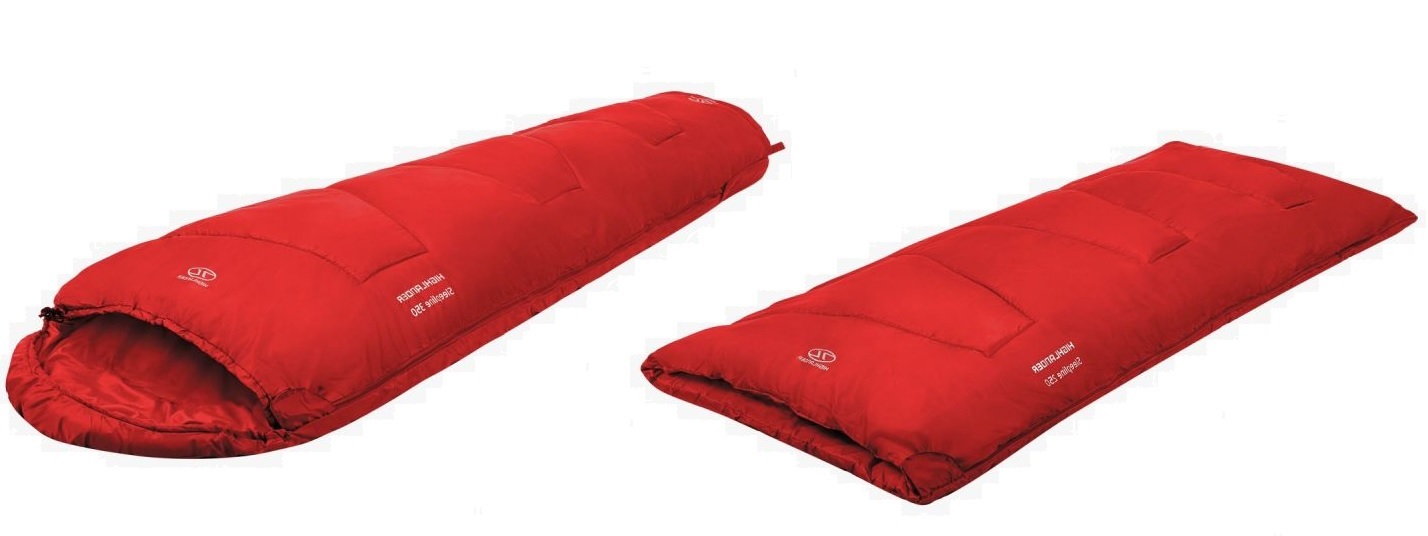Filter by Topic:
Apr 26, 2021
A sleeping bags can be a bit of a minefield when it comes to knowing what to buy. There are so many out there with various ratings of seasons, comfort and lower limit as well as varying materials, shape and insulation. What does all the jargon mean? Read on to find out what type best suits your needs.
Season rating
These are guidelines to help the consumer purchase the correct sleeping bag depending on the time of year it is expected to be used. Ratings begin at ‘1 season’ for summer months and advance to ‘5 season’ or ‘4+ season’ for sleeping bags to be used in the coldest conditions.
| Season Rating | Temp Limit | Suitability |
| 1 | 5°C | Hot summer months |
| 2 | 0°C | Late spring, early autumn, cooler summer nights |
| 3 | -5°C | Early spring, late autumn and mild winter nights |
| 4 | -10°C | Winter |
| 4+/5 | -40°C | Expeditions, mountaineering trips |
Comfort rating
Comfort ratings indicate the level of comfort an ‘average person’ will experience in a sleeping bag depending on the external temperature and effectiveness of the sleeping bag an insulator. There are four comfort ratings:
Upper limit
The highest temperature the ‘average male’ can tolerate and still have a comfortable night’s sleep
Comfort
The temperature at which the ‘average female’ can have a comfortable night’s sleep
Lower limit
The temperature at which the ‘average male’ can expect to sleep for eight hours in a curled position
Extreme
The lowest temperature at which the ‘average female’ can survive for six hours without risk of hypothermia
So for example, if a sleeping bag has a 'comfort level' 0°C and a 'lower limit' of -5°C, you can expect to have a comfortable nights sleep if temperatures remain above 0°C and sleep around eight hours in a curled position as long as temperatures remain above -5°C.
As you might imagine, the ‘average person’ is not the most useful term as everyone is different and has vastly different tolerance levels. Because of this, it is important to carefully consider your own ability to tolerate hot and cool temperatures to choose the right sleeping bag. If in doubt, always pick slightly on the warmer side as it is much easier to cool down than warm up.
Shape
Generally there are two different shapes of sleeping bag – ‘mummy’ and ‘square’.

Square
Square sleeping bags are as the name describes square at the top and bottom to form a rectangular sleeping bag. This type of sleeping bag is ideal for when you have extra room and can be unzipped to act as a duvet. Most square sleeping bags also have zips on both sides so can be zipped together with the same type of sleeping bag to form a double. They are without doubt bulkier than a ‘mummy’ so not as easy to pack or carry and as they are roomier offer less warmth.
Mummy
Mummy sleeping bags don’t offer as much room for manoeuvre so if you like to spread out when you sleep perhaps consider an alternative! What they lack in roominess however they more than make up for in heat retention and space saving design. Due to their shape, they are easily rolled up into a carry bag and stowed into a rucksack.
Sleeping bag liners
Sleeping bag liners act as an extra layer between you and your sleeping bag. They provide additional warmth and protect your sleeping bag from dirt so prolong the life. Most liners are designed to be machine washable so are easily cleaned and can be used again, they are much cheaper than a new sleeping bag and are very light so effortlessly packaway into a bag.


